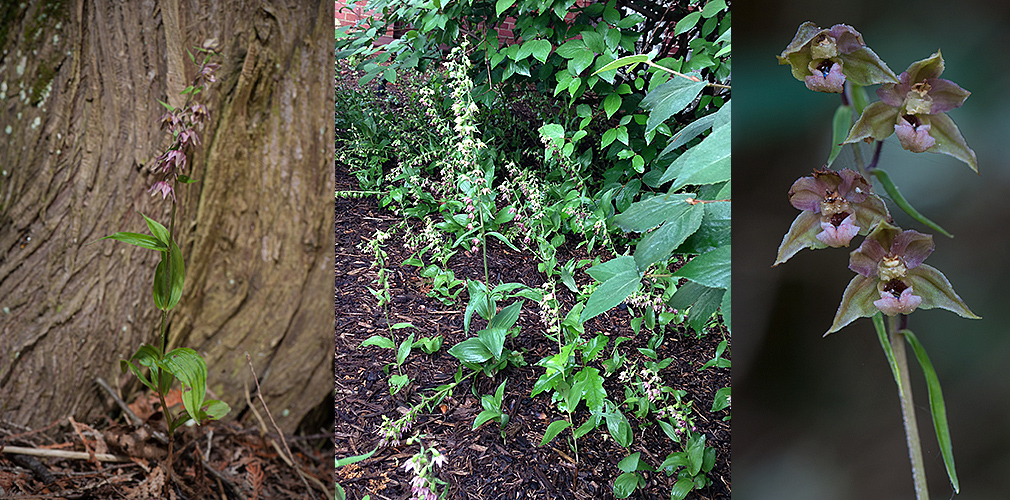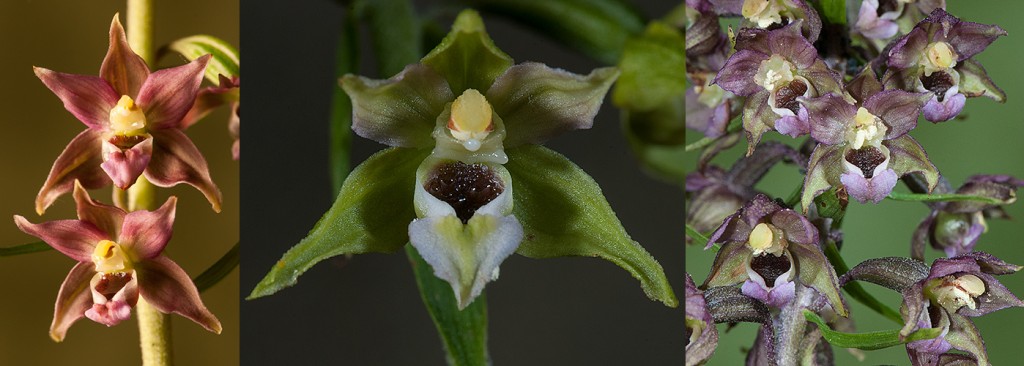Broad-leaved Helleborine (Epipactis helleborine) is a European Orchid that is invading many woodlots and gardens in Michigan. In 1968, Ed Voss wrote an article for the Michigan Audubon Newsletter titled “A Weedy Orchid?” Ed’s prediction proved to be correct so I removed the question mark from my title.

Profile of flower, an opening flower showing the green sepals which form the outer bud covering, close-up showing droplets of nectar
Imported for its supposed medicinal values, it has colonized much of the state. The oldest specimen for the state was collected in 1919, in Berrien Co., in the southwest corner of the state. In the 1930s it was found on the campus of Michigan State. When Fred Case wrote the first edition of his Orchids of the Western Great Lakes Region this was one of the few orchids growing wild in the state that he had not found. I first found it in 1973 in the lawn of the main branch of the Detroit Public Library. A few weeks later I saw it in the Porcupine Mountains in the Upper Peninsula. It is now recorded from 40 counties in Michigan and doubtlessly occurs in many more.
It is now common in the eastern part of the Upper Peninsula. Large groups can be found in Hartwick Pines State Park especially among the old growth pines. It occurs in Royal Oak’s two Nature Parks. I am starting to see it as a garden weed. My church in Huntington Woods has several hundred plants in one flower bed. Lewiston Lodge in Montmorency Co. has this plant throughout its landscaping. It is a weed that has invaded my garden in Troy. The Michigan State Extension even has a post on controlling this species.

Plant in natural cedar woods, group of plants in landscape (note domestic viburnums), close-up of spike
The plants look more or less like non-hairy lady’s-slippers. Helleborine is taller and the leaves are only twice as long as they are wide. In the wild it can be mistaken for Long-bracted Orchid which blooms earlier, has smaller flowers, much longer bracts, and a notched lip. At least two named flower color forms occur in Michigan. In the common form the flowers are reddish but a green flowered form (f. viridens) often occurs. Sometimes plants with flowers reddish-purple can be seem. Populations can have all color forms.
This orchid is expanding its range in Michigan and should be an early find for a beginning plant hunter. In time, we will tell whether it proves to be a pest.
Copyright 2013 by Donald Drife
Webpage Michigan Nature Guy
Follow MichiganNatureGuy on Facebook

